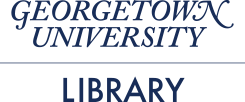The Maker Hub has both FDM printers and an SLA printer available for use. For information on setting up 3D prints in the Maker Hub, refer to our guides listed below (or find a Volunteer!):
If you want to learn more about the 3D printers we have available at the Maker Hub, check out our Workshops and Events page for 3D Printing workshops.
3D Printing Policies
- The 3D printers may only be used by trained individuals, or under the supervision of a Volunteer or the Maker Hub Manager.
- Only Maker Hub Volunteers are allowed to change filaments and perform machine maintenance.
- Print jobs must be kept under 18 hours unless given express permission by a Maker Hub Volunteer.
- Visitors may only use one printer at a time unless given permission by Maker Hub Volunteer.
- All print jobs must be logged on 3D Print Log with the visitor's NetID .
- Costs: The Maker Hub is proud to provide FDM filament and SLA resin for free to its users. In order to keep this sustainable, we ask that you provide your own filament/resin if you require large amounts of material (over 500g) for your project. If purchasing your own filament or resin, please contact makerhub@georgetown.edu for recommended suppliers.
Things to keep in mind with 3D printing
3D printing is a wonderful technology, but it is not infallible. Know that some 3D printing jobs will fail during the print for one reason or another. Failed jobs can occur for a variety of reasons, most of which are not the fault of the job owner. Please plan your project accordingly to avoid a failed print ruining your project!
Additionally, supplies available in the Maker Hub are subject to change. Please contact the Maker Hub to confirm supplies, or drop by to see what we have available. If you are interested in purchasing your own 3D printing filament or resin, please contact the Maker Hub to confirm you are purchasing the correct types.
LinkedIn Learning
LinkedIn Learning provides 22 courses on 3D Printing, ranging from learning the basics to additive manufacturing.
What kind of 3D Printing does the Maker Hub offer?
The Maker Hub has both FDM printers (Ultimakers) and an SLA printer (Formlabs) available for use by Georgetown students, staff, and faculty. Let's learn a little more about each of these technologies:
FDM 3D Printing
FDM, or fused deposition modeling, is the most common type of 3D printing found at the consumer level. FDM 3D printers work by extruding thermoplastic filaments (the Maker Hub primarily uses PLA) through a heated nozzle, very similar to how a hot glue gun works. The plastic is deposited layer by layer to a build platform, with each layer laid down one at a time until the part is complete.
SLA 3D Printing
Stereolithography was the world’s first 3D printing technology, invented in the 1980s, and is still one of the most popular technologies for professionals. SLA 3D printers use a laser to cure liquid resin into hardened plastic in a process called photopolymerization. The layers in an SLA print are much smaller than in a FDM print, allowing the models to be much more detailed. The downside to SLA printing is that it requires time-intensive post-processing.
